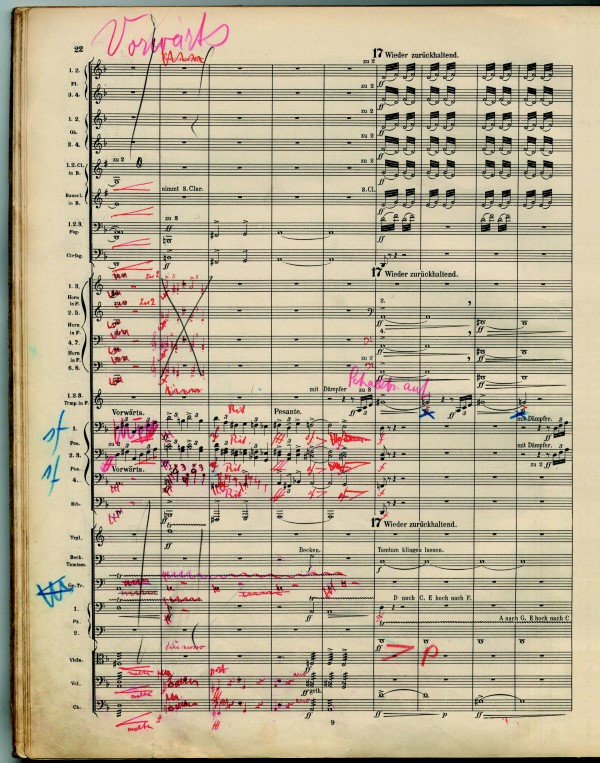Symphony No. 3 by Gustav Mahler was written between 1893 and 1896. It is his longest piece and is the longest symphony in the standard repertoire, with a typical performance lasting around ninety to one hundred minutes.
In its final form, the work has six movements, grouped into two Parts. The first movement alone, with a normal duration of a little more than thirty minutes, sometimes forty, forms Part One of the symphony. Part Two consists of the other five movements and has a duration of about sixty to seventy minutes.
Movement 1: Kraftig. Entschieden
Movement 2: Tempo di minuetto. Sehr massig
Movement 3: Comodo. Scherzando. Ohne Hast
Movement 4: Lied 1: Sehr langsam! Misterioso: O Mensch! gib Acht!
Movement 6: Langsam. Ruhevoll. Empfunden
As with each of his first four symphonies, Mahler originally provided a programme of sorts to explain the narrative of the piece. At different times, he shared evolving versions of a program for the third symphony with various friends, including Natalie Bauer-Lechner (1858-1921), a close friend and confidante, Anna Bahr-von Mildenburg (1872-1947), the dramatic soprano and Mahler’s lover during the summer of 1896 when he was completing the symphony, and Max Marschalk (1863-1940), a music critic. In its simplest form, the program consists of a title for each of the six movements:
- “Pan Awakes, Summer Marches In”
- “What the Flowers in the Meadow Tell Me”
- “What the Animals in the Forest Tell Me”
- “What Man Tells Me”
- “What the Angels Tell Me”
- “What Love Tells Me”
Mahler, however, elaborated on this basic scheme in various letters. In an 1896 letter to Max Marschalk, he called the whole “A Summer’s Midday Dream,” and within Part One, distinguished two sections, “Introduction: Pan awakes” and “I. Summer marches in (Bacchic procession)”. In a June 1896 letter to Anna von Mildenburg, Mahler reaffirmed that he conceived the first movement in two sections: I. What the stony mountains tell me; II. Summer marches in. In another letter to Mildenburg from Summer 1896, he said that “Pan” seemed to him the best overall title (Gesamttitel) for the symphony, emphasizing that he was intrigued by Pan’s two meanings, a Greek god and a Greek word meaning “all”.
All these titles were dropped before publication in 1898.
Mahler originally envisioned a seventh movement, “Heavenly Life” (alternatively, “What the Child Tells Me”), but he eventually dropped this, using it instead as the last movement of the Symphony No. 4. Indeed, several musical motifs taken from “Heavenly Life” appear in the fifth (choral) movement of the Third Symphony.
The symphony, particularly due to the extensive number of movements and their marked differences in character and construction, is a unique work. Mahler was well acquainted with Natalie Bauer-Lechner (1858-1921), a violist, during the time period when he composed this third symphony. The structure and content was not revealed by Mahler to the public but he informed Bauer-Lechner about it. She kept a private journal on what he stated about this third symphony. Mahler said, “You can’t imagine how it will sound!”
Gustav Mahler’s own copy of the first full score of Symphony No. 3 with his markings on it.

Gustav Mahlers own copy of the first full score of Symphony No. 3 with his markings on it.
Listening Guide
